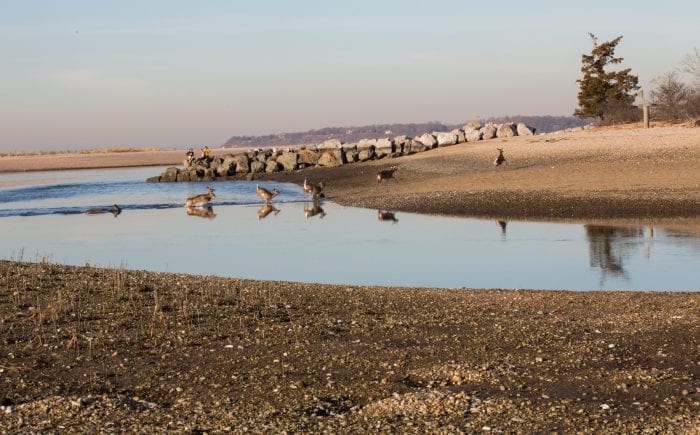Gyrodyne’s Sewage Plant Proposal Carries a Bad Whiff

By Warren Strugatch
We Long Islanders are a coastal people. Waterfronts provide our communities with beauty and sense of place; offer abundant recreation opportunities and make dining out delightful. Waterways teach our children about ecology and nature and account for billions of dollars in tourism revenue for businesses. The so-called “conditional approval” vote of a sewer treatment plant by the Suffolk County Sewer Agency on Gyrodyne property next Monday (June 22) threatens to destroy the balance between quality of life and economic opportunity that characterizes life on the North Shore.
Gyrodyne’s proposed 7-acre sewage treatment plant is the lynchpin of a humungous, much-debated development plan that, if it goes forward, will forever change life along Route 25A from Smithtown through Brookhaven towns. Gyrodyne’s planned tenants — a 125,000 square feet medical office complex, a 250-room assisted living center and a 150-room hotel — will of course generate jobs, bring traffic, create growth and — inevitably — produce waste. Gyrodyne, which has seen similar proposals go down in defeat for decades, this time promised to run a pipeline to nearby Lake Avenue. The offer made Gyrodyne a hero on Lake Avenue and made the company friends in local positions of power. Suddenly, their long-rejected proposal seems headed for success.
Two factors make the big sewer debate particularly contentious:
Toxic Effluent. Tenants will produce high quantities of toxic effluent, laden with radioactive waste, pharmaceutical byproducts, nitrogen and biohazards. As environmental experts testified at town hearings in January, when these components enter the harbor they increase algae bloom, turn water green, kill fish, and ultimately kill the aquatic ecosystem, rendering the waterways unfit for fishing, swimming and boating.
Gravity. Effluent will flow directly downhill from the plant and into Stony Brook Harbor, less than 8,000 feet downhill. Environmental protocols or advanced filtration requirements are not mentioned in the plant’s specs. Meaning: Pollution of the harbor is inevitable.
Inevitably, jurisdictional questions arose. Authority over the Gyrodyne proposal rests with the Town of Smithtown, which conducted hearings in January. More than 100 people spoke, including noted environmentalists, scholars of marine sciences, and local officials known for their environmental commitments. Homeowners and business owners also spoke, testifying to the likely impact the development could have on their businesses, home equity and quality of life. Most of their testimony was negative.
Town of Smithtown is still reviewing their testimonies, in accordance with New York State’s SEQRA law, enacted to ensure environmental protections are present in local permitting. The Suffolk County Sewer Agency, by choosing to interrupt the town’s process, defeats the spirit of the state’s law. The agency’s rush to offer “conditional approval” is illogical and unseemly, blurring jurisdictional responsibility and raising serious questions as to why they are calling this vote while the actual permitting agency continues to deliberate.
I don’t believe a plan that’s so poorly conceived and been dragged through a jurisdictional back door is going to work over the long haul. A sewage plant that despoils life in its shadow is ultimately harmful, not helpful, to economic growth. Suffolk County’s sewer functionaries should call off their vote, which was never a good idea, and let Smithtown’s officials do what they were installed to do. Gyrodyne, try again. Next time keep in mind that your neighbors love their water and their waterways and demand that their local officials balance environmental protection with economic growth.
Warren Strugatch is president of Select Long Island, an economic development news publisher.






